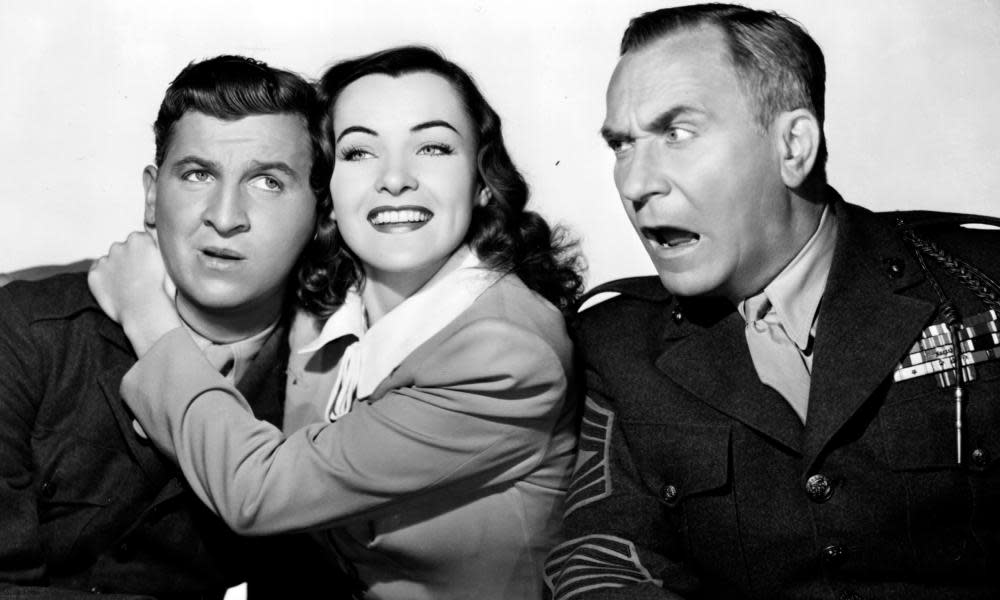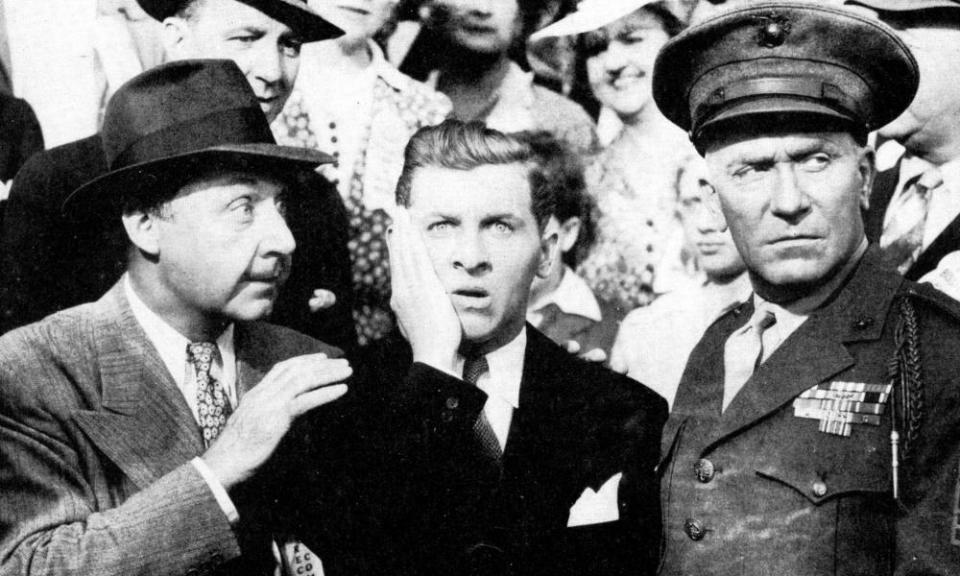What I'm really watching: golden age Hollywood comedies

How to fill the evenings in these desolate times? A colleague told me she will be delving into her BFI playlist of Ingmar Bergman and Werner Herzog. I hope to emulate her ambition, but I was even more thrilled when a kindly cineaste neighbour turned up at my door with DVDs of a trio of Hollywood comedies: Design for Living (1933) directed by Ernst Lubitsch and two Preston Sturges classics, The Lady Eve (1941) and Hail the Conquering Hero (1944).
For a few happy hours, I was able to suspend the feelings of dread and boredom we are all currently experiencing. Watching them on successive evenings, I was struck by several things. They are all dialogue-heavy movies but have a speed and fleetness of foot that make a lot of today’s films seem cumbersome. They also remind me of George Meredith’s dictum in his Essay on Comedy that laughter depends on quickness of perception: you realise how much film-makers once relied on the alertness of a mass audience. And, while these films have a comic brio, they incidentally reveal a lot about sexual, social and even political attitudes.
I was marginally disappointed only by Design for Living. Lubitsch was a supreme comic stylist and he gets a fine performance from Miriam Hopkins as a woman simultaneously attracted to a painter and a dramatist. But Ben Hecht, who based his script on a Noël Coward play, once joked “There’s only one line of Coward left in the picture – see if you can find it.”
More seriously, the movie skirts round the point, highlighted in recent stage revivals at the Donmar in 1994 and the Old Vic in 2010, that the two men are as closely attached to each other as they are to the heroine, Gilda. It is hard to believe in such fine upstanding examples of American virility as Gary Cooper and Fredric March sharing a bohemian Paris apartment, let alone a bed, and much of the original’s loucheness gets lost. Lubitsch directs with admirable briskness, but this is Coward sanitised for the cinema.
If Lubitsch is evasive about sex, Sturges in The Lady Eve created one of the most subtly erotic films in cinema history. The plot hinges on the mutual attraction between Barbara Stanwyck as a shipboard cardsharp and Henry Fonda as a rich but naive ophiologist. There’s a great scene where Stanwyck flees in terror from Fonda’s pet snake – make of that what you will – and draws him to her cabin where she holds him fiercely in her grip while urging him “don’t let go of me”: the combination of Stanwyck’s allure and Fonda’s perplexity make this scene heated and hilarious at the same time.
Sturges also had a gift for social satire while exploring the strangeness of sex. Having been dumped by Fonda, Stanwyck gets her revenge by turning up at his palatial family home disguised as an English aristocrat. Sturges has great fun at the expense of the greed and snobbery of the American rich who slaver over a title. But at the heart of the story lies Fonda’s bewildered fascination at the sight of a renewed Stanwyck. “It’s positively the same dame,” protests his sidekick. Fonda’s puzzled uncertainty, however, eerily prefigures Hitchcock’s Vertigo and James Stewart’s similar attraction to a transformed Kim Novak.

In The Lady Eve, Sturges proved that comedy could work simultaneously on several levels. And he confirmed that in Hail the Conquering Hero which, while made in the midst of war, audaciously questions the whole notion of heroism. Eddie Bracken plays a marine who, discharged from the services because of hay fever, returns to his native town and unwittingly finds himself treated as a conqueror. James Agee in a perceptive review pointed out a central implausibility: you wonder why a group of genuine marines, just back from Guadalcanal, should create a fictive past for Bracken and eagerly endorse his elevation to local hero and prospective mayor.
But the sheer energy of the film sweeps aside any logical objections: the scene of Bracken’s return, where rival town bands play a cacophony of competing tunes, is one of the most riotous in cinema. For all its comedy – which has echoes of Gogol’s The Government Inspector – the movie also raises disturbing questions. As David Thomson said, “It’s the first serious warning about the loss of judgment in American public life.”
What Sturges suggests – and this in 1944 – is that a gullible populace is so hungry for heroes that it will happily endorse any pretender to the title and will even, as a throwaway line in the movie suggests, see in him a potential president.
One hardly needs to press the point that Sturges’s movie has a prophetic edge. What really hit me, however, seeing these three films was that Hollywood golden age comedy had the capacity to make us laugh uproariously while also forcing us to think. Where, I wondered, are its equivalents today?

 Yahoo Movies
Yahoo Movies 
